Kampala City: Capital City of Uganda
Kampala City: Capital City of Uganda Safaris & Tours, Location, Best time to visit, attraction, Safari accommodations and more
Kampala City: Capital City of Uganda
Sitting near the northern shores of Lake Victoria with a population of over 2.5 million, Kampala City is the capital and largest urban city center in Uganda and serves as the country’s political, commercial, and cultural hub. Originally known as the city of seven hills, Kampala has now expanded across many more.
This beautiful capital city of Uganda has many sides to it with downtown at its core featuring loud crowded, street vendors, chaotic taxi parks with grid locked traffic. Its intensity is extremely real offering you a feel of the city’s pulse.
On the other hand, Nakasero Hill shifts the atmosphere entirely just a short drive uphill. Here, the noise down town is engulfed by Kampala’s high-end hotels, embassies, and government offices. For locals and other individuals looking for a quieter and polished setting, you’ll find them in upscale restaurants and bars popular
History has it that this city of 2.5 million people was initially the capital city of Buganda Kingdom before it gaining its new global status as the capital city of Uganda.
Up until now, several key landmarks from earlier era are still existent including the Kasubi Tombs, the Lubiri Palace, and the traditional Buganda parliament.
Immediately upon after Uganda gained her independence in the year 1962, the city went through political turmoil under the reign of Milton Obote and Idi Amin.
Since then, Kampala has steadily developed, with much of the war damaged infrastructure in the past being replaced by new hotels, malls, hospitals and roads.
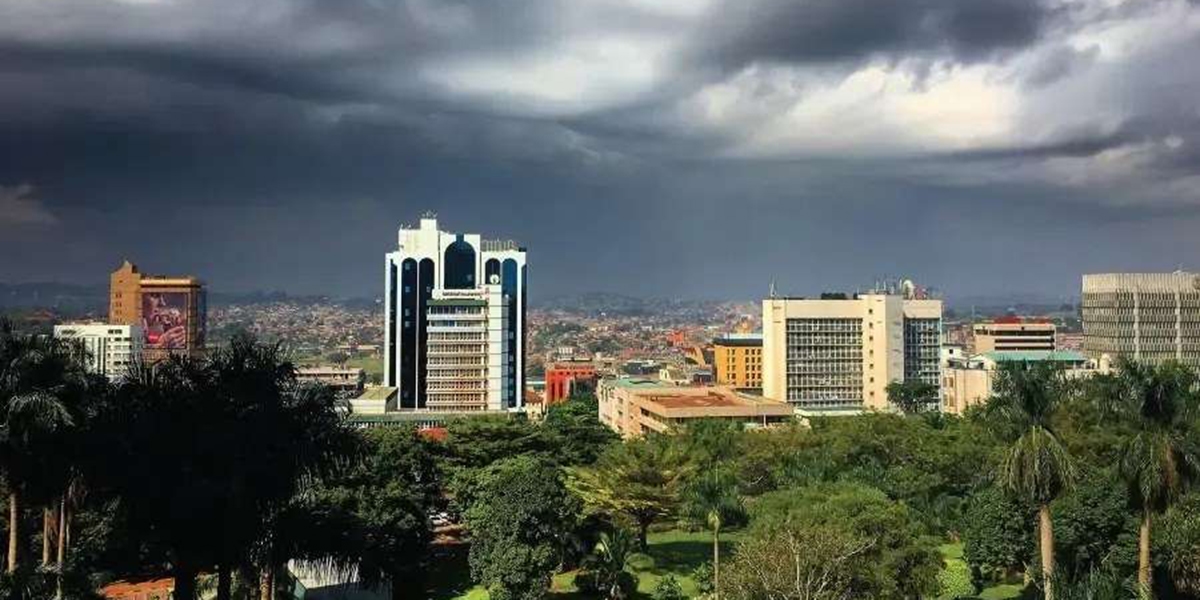
Kampala City
Attractions in Kampala City
Uganda Martyrs Shrine – Namugongo
Located about 15 kilometers east of Kampala along Jinja Road, Namugongo was once a royal execution site. In 1886, 14 Christian converts were burned alive here by order of the then King of Buganda Kingdom, Kabaka Mwanga for refusing to give up their faith. Today, the Uganda Martyrs Shrine honors their memory.
Wit 22 copper pillars supporting a circular structure modeled after a traditional African hut, the shrine stands out for its design. Inside, wooden doors illustrate the martyrs’ story. Capable of holding about 1,000 people, the shrine’s interior features wooden doors illustrating the martyr’s stories.
Upon a visit by Pope John Paul 11 in 1993, it was elevated to a Minor Basilica
Thousands gather at Namugongo shrine every June 3rd to honor the martyrs, with smaller numbers visiting year-round.
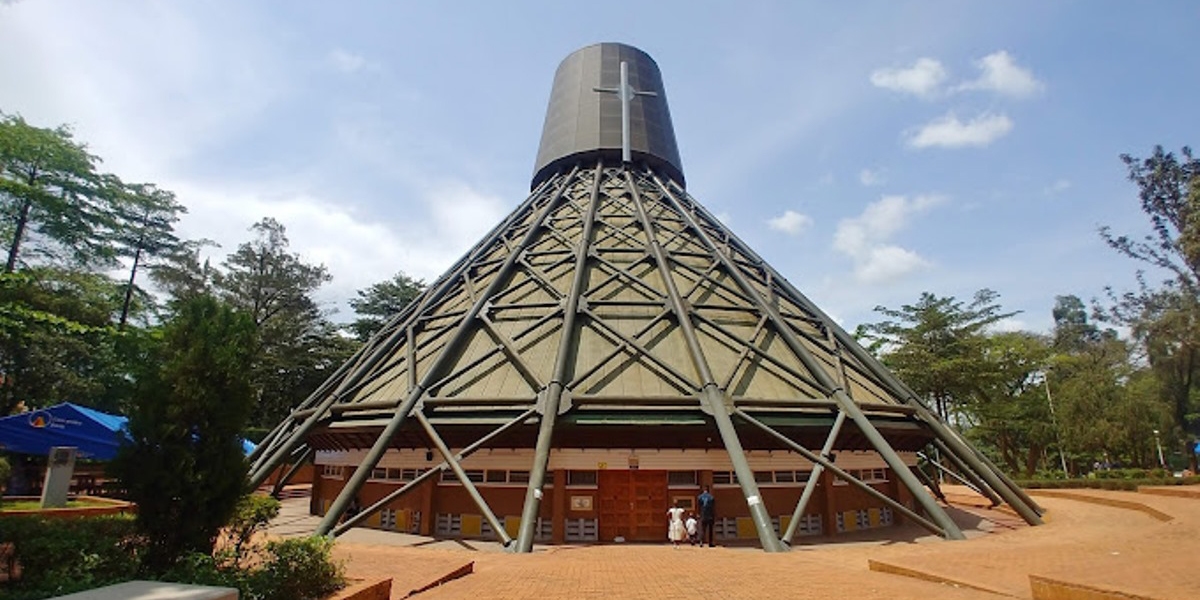
Uganda Martyrs Shrine
Kampala City: Capital City of Uganda Pictorial




Kasubi Tombs
This United Nations Educational, Scientific and Cultural Organization (UNESCO) World Heritage Site known nationwide as the graveyard of four former Kabakas of Buganda kingdom, that is, Kabaka Mutesa 1, Kabaka Mwanga 11, Kabaka Daudi Chwa 11 and Kabaka Edward Mutesa 11 is located approximately 5 kilometers from the city center on Kasubi Hill
Kasubi tombs also serves as an important cultural site with its traditional thatched architecture and royal symbolism making it one of the city’s most significant landmarks.
Following the Makerere University and Nakulabye road, this hilly drive experience is one to die for on a visit to Kampala.
Kabaka’s Palace – Mengo
Scenically located on Mengo Hill along Lubaga Road, the Kabaka’s Palace is the official residence of the King of Buganda kingdom.
There’s more to this beautiful place than what meets the eyes with historic art, symbolic architecture, and insights into the traditions of one of Uganda’s oldest kingdoms enhancing the palace visit experience.
You won’t move far before you set your eyes on Bulange, the Buganda parliament building serving as another example of impressive colonial-era architecture tied closely to the kingdom’s governance.
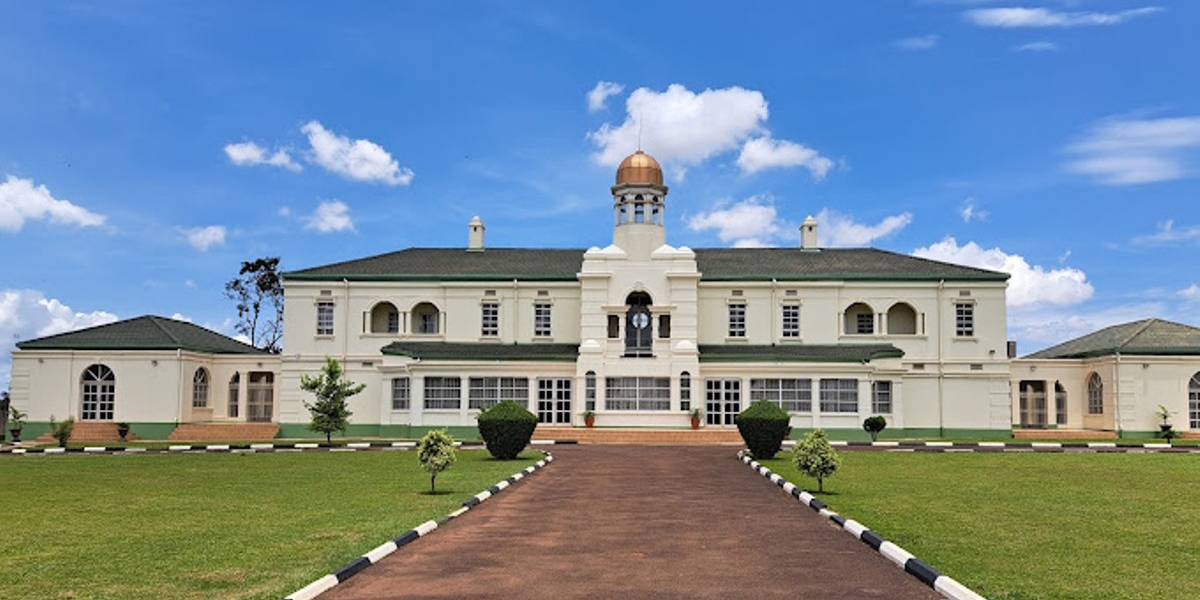
Kabaka’s Palace in Mengo
Rubaga Cathedral
Officially known as Saint Mary’s Cathedral, Rubaga Cathedral is the main church of Uganda’s Roman Catholic Archdiocese. It is located about 3 kilometers west of Kampala city on Lubaga Hill
This historic building is also known for being the seat of the Archbishop of Kampala and has long been a center of faith and religious leadership in the country
Recommended Safaris to Kampala City: Capital City of Uganda
Independence Monument
Located across just Standard Chartered Bank along Speke Road is the Independence Monument, one of Uganda’s key heritage symbols. Funded by the British before independence in 1962.
It is a sculpture showing a man lifting a child representing Uganda’s emergence from colonial rule.
This national monument is also featured on the back of all Ugandan currency notes from 1,000 to 50,000 shillings.
It’s a quick stop, but a meaningful one especially for those interested in the country’s modern history.
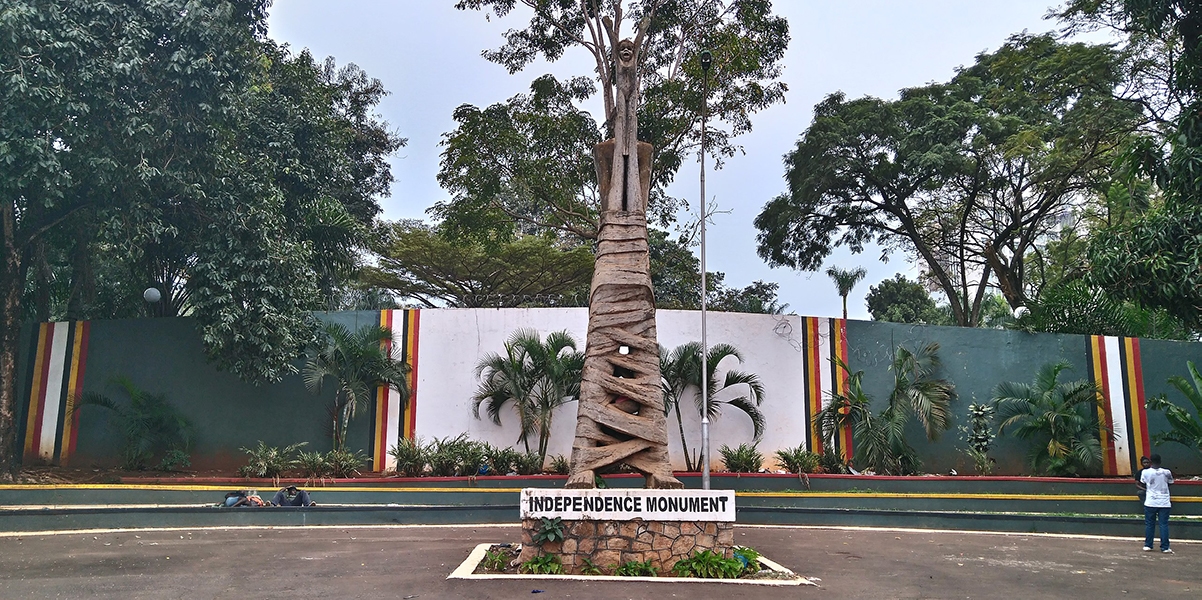
Independence Monument
Uganda National Mosque (Gaddafi Mosque)
In the Old Kampala area on Kampala Hill is the Uganda National Mosque commonly know as Gaddafi Mosque. It gets its name in remembrance of the former and fallen president of Libya, H.E Muammar Gaddafi who commissioned it as a gift to Uganda’s Muslim community.
Officially open in 2007, Uganda’s biggest mosque met its completion in 2006.
With additional space in the gallery and on the terrace, the mosque holds up to 15,000 people not forgetting the offices of the Uganda Muslim Supreme Council making it one of the largest in Africa
During your visit to this mosque, you can climb the minaret for sweeping views of the city worth the effort if you’re up for the stairs.
Uganda Museum
Showcasing the country’s cultural, archaeological, and natural history through exhibits on musical instruments, tools, weapons, and traditional life, the Uganda Museum is the oldest museum in the entire East Africa and it was founded in 1908
Its rich history makes it the best place to visit in case you are interested in learning more about how Uganda’s past has shaped its present.
Ndere Centre
It is a very distinguished cultural center located in one of the Kampala suburbs called Ntinda – a 10-minute drive from the city center. At Ndere, you are able to experience a mixture of all the cultures of Uganda is one boiling pot.
The center offers cooking lessons for traditional Ugandan meals, traditional dance classes, and amazing performances from local dance groups.
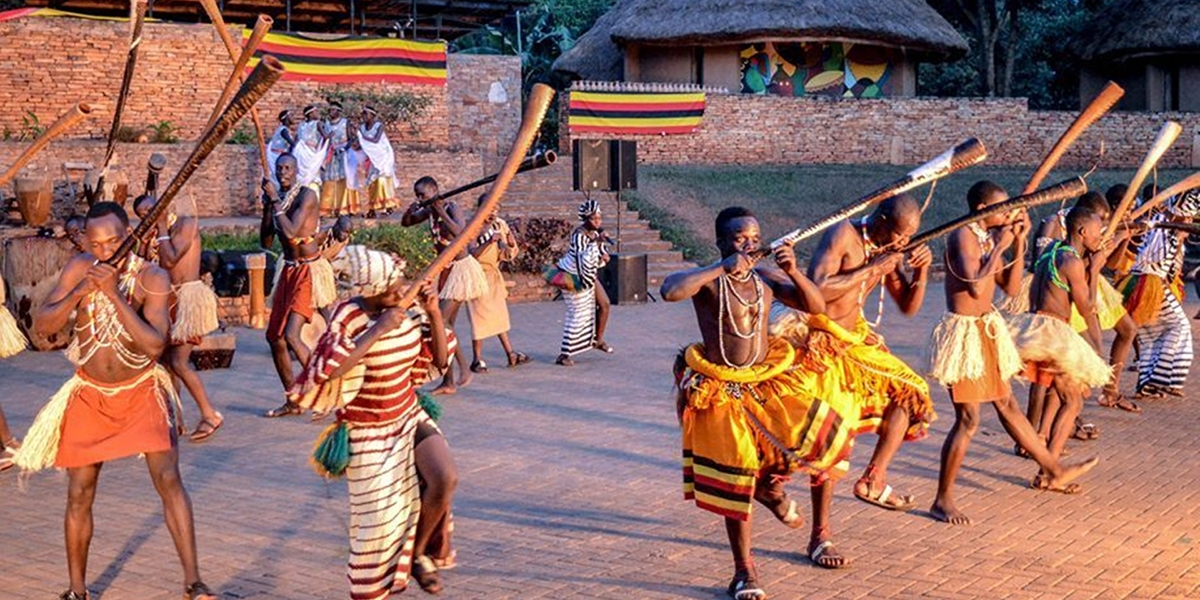
Ndere Cultural Center
Top Sightings in Kampala City: Capital City of Uganda
No results found.
Bahai Temple
Strategically located just 7 kilometers from the city center on Kikaya Hill, the Bahai House of Worship in Kampala is the only one of its kind in Africa.
Completed in 1961, it welcomes visitors daily from 9:00 am to 5:00 pm, with services held on Sundays.
Beyond its spiritual role, the temple grounds offer open gardens, city views, and great birdwatching with more than 50 species of birds recorded here. Although interior shots are prohibited, you can take photographs of the exterior.
Craft markets
Quite a lot of craft markets do exist in the city some in permanent locations, whereas others are weekly or monthly markets dependent on what you are looking for. You have the opportunity to visit a craft market and purchase a reminder of Ugandan heritage from prints, to canvas, paintings and postcards.
Permanent craft markets include the Buganda Road craft market, the National Theatre craft market and the Uganda Crafts 2000 ltd.
Local market in Kampala
Are you looking to have an experience on how a normal Ugandan citizen runs his/her daily life? Local markets must be you must visit locations in Kampala.
Kampala offers a few different markets to visit with the commonly notable ones being the famed Owino and Nakasero markets that both come with different experiences to offer.
Owino is known for its hustle and bustle with chaotic looking stalls whereas Nakasero is a little more relaxed and a preferred first choice.
Owino market is understandably chaotic as this is one the largest in this area of Africa with the most abundant product being second hand clothing, but you can really find most things in the market, such as traditional medicine and electronics.
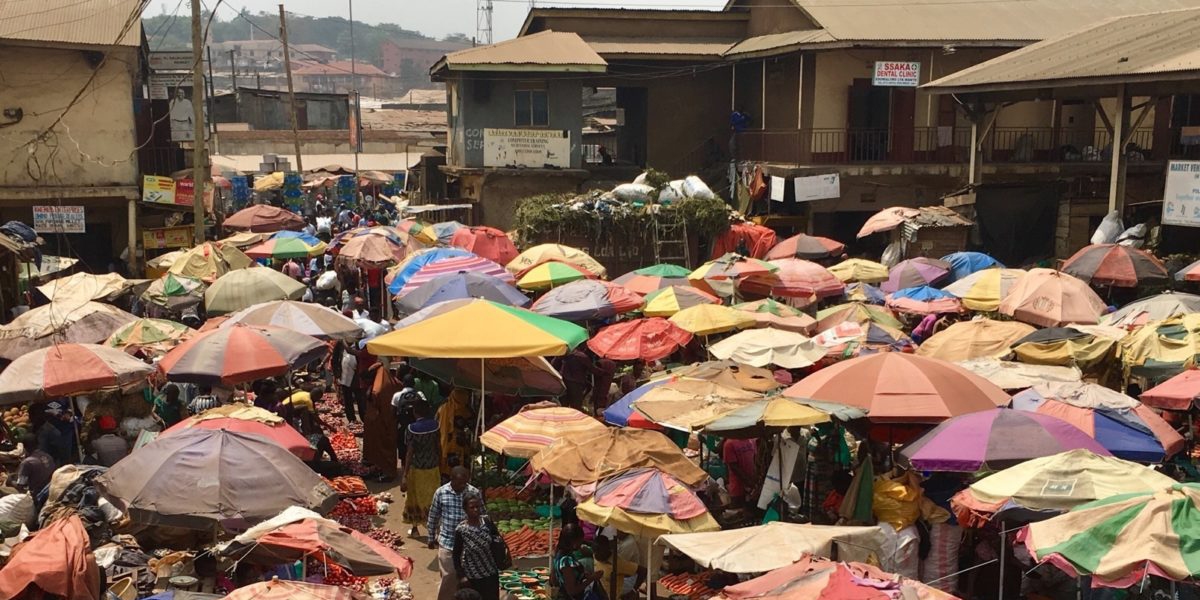
Owino Market
Offering a more relaxed environment, Nakasero Market is more easily found and reached from Entebbe Road. Nakasero is a much smaller market and because of this can be more enjoyable.
You can find many different things with a focus on fresh fruits and vegetables, but also clothes, textiles, shoes and some electronics. Although nowhere near as big as Owino, Nakasero is the largest market in the Kampala central area.
Where to Stay in Kampala City
Kampala city has various accommodation options it offers ranging from high-end splash luxury hotels and lodges to budget friendly hotels all offering different comfort levels and views catering for all types of travelers.
Some of them include;
Sheraton Hotel
Kampala Serena Hotel
Mestil Hotel and Residences.
Hotel Africana
Planning to explore Kampala City? It’s worth spending a day or two to take in the contrasts—chaotic markets, historic landmarks, hillside views, and spiritual centers with each stop adding something to your understanding of Uganda’s capital.
Other Related destinations...
Not just a safari to Africa,
It's an experience of a lifetime.

100% Excellent Reviews on Tripadvisor
100% Excellent reviews on Safaribookings
6+ years of experience
Unforgettable experiences guarantee.
